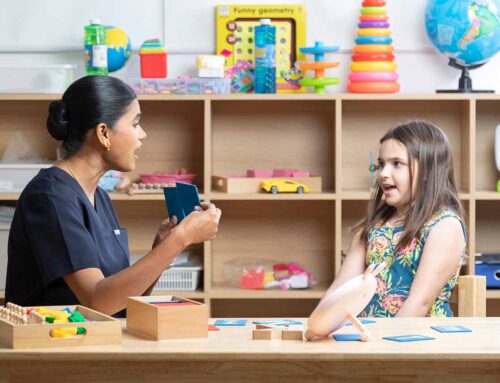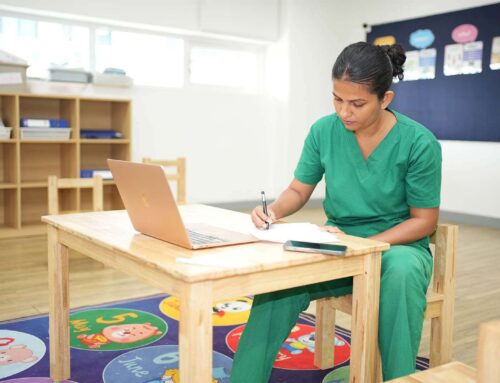Art is not just about colors and shapes—it’s a powerful form of communication. For children in speech therapy, especially those with limited verbal skills or those on the autism spectrum, creative expression through painting and drawing can unlock new pathways for language development.
At OrbRom Center in Phnom Penh, we integrate creative activities like painting into our speech therapy sessions to support expressive and receptive language. These hands-on activities are more than fun—they are therapeutic tools that spark communication, imagination, and emotional expression.
Why Art Supports Speech Development
Children often understand more than they can say. Creative activities give them a way to express ideas before they have the words. Here’s how painting and other artistic play benefit speech therapy:
-
Reduces pressure: Kids can communicate without needing perfect words
-
Improves sequencing and storytelling: “First I used blue, then red”
-
Introduces descriptive language: “Soft,” “wet,” “circle,” “bright”
-
Expands vocabulary: Color names, shapes, actions (dip, brush, mix)
-
Encourages social interaction: Sharing tools, explaining art, asking for help
Art becomes a gateway for conversation—and a celebration of each child’s inner world.
How We Use Art at OrbRom Center in Phnom Penh
We don’t expect Picasso. Instead, we focus on connection, vocabulary, and confidence. Our speech therapists use art activities to:
-
Model new words and phrases as the child paints
-
Prompt sentence construction: “I see a red flower” or “You are painting a sun”
-
Encourage turn-taking and choice-making in group settings
-
Target functional goals like requesting colors or describing a picture
-
Incorporate sensory regulation by offering calming, tactile materials
This integrative approach is especially helpful for children with ADHD, autism, or sensory processing issues.
How Parents in Phnom Penh Can Use Art for Speech at Home
You don’t need a professional art setup. Simple tools like crayons, paintbrushes, or markers can create rich language opportunities at home:
-
Ask open-ended questions: “What are you painting?” “Tell me more!”
-
Describe what you see: “You made a big blue line”
-
Introduce sequencing: “First we draw, then we color, then we show”
-
Give choices: “Do you want red or green?”
-
Celebrate effort: “You worked hard on this. Can you tell me about it?”
Whether your child is verbal or still learning how to express themselves, the goal is always the same—connection through creativity.
Art, Communication, and Confidence Go Hand in Hand
At OrbRom Center, we believe every child deserves a voice. When words are hard to find, a paintbrush or crayon can become a powerful tool for expression. Through art, children learn to share their thoughts, feelings, and stories—one brushstroke at a time.
👉 Explore our tailored Speech Therapy Services in Phnom Penh.
We are the only Preschool specialized on children with special needs in PhnomPenh.
- Internationally qualified teachers
- Cambodia’s largest sensory room
- Outdoor swimming pool
- Covered outdoor playground📞 Phone: 077.455.993
Telegram Link: https://t.me/OrbRom






